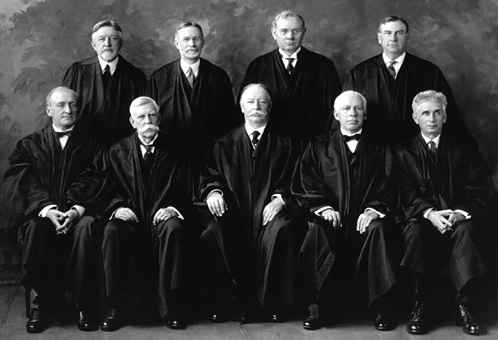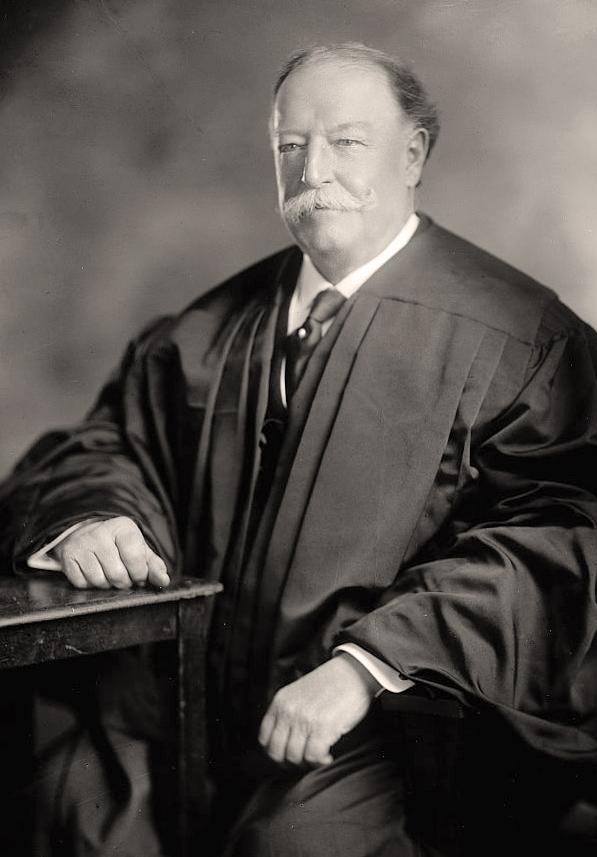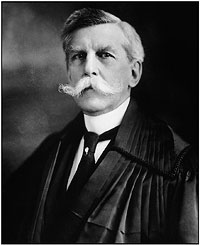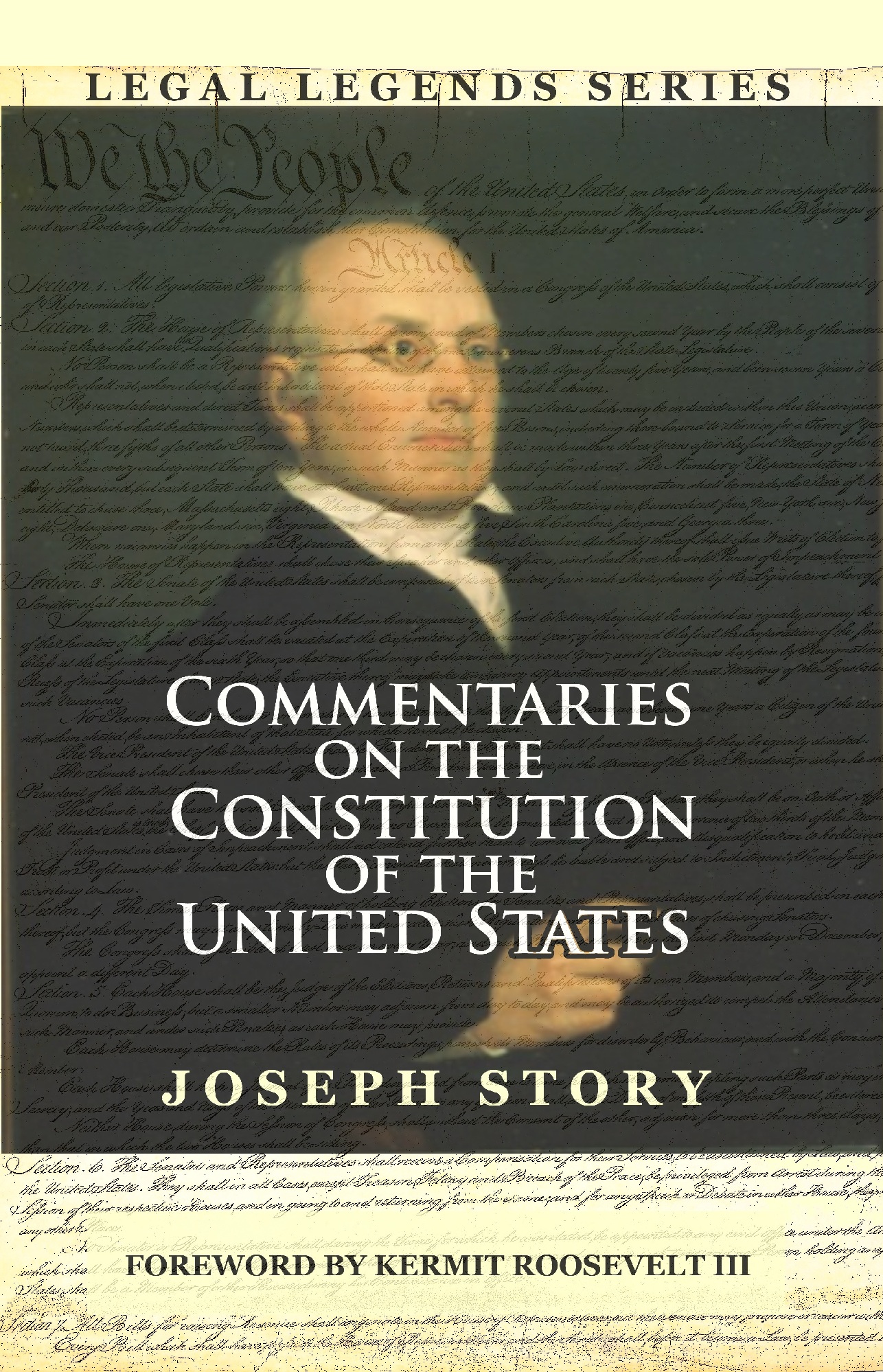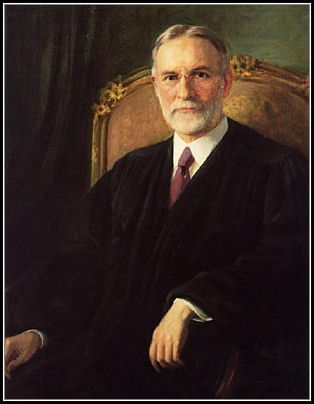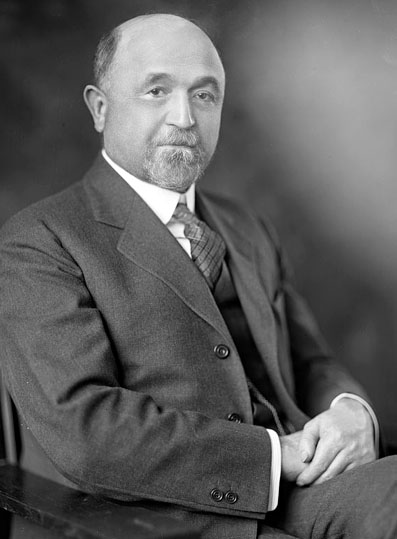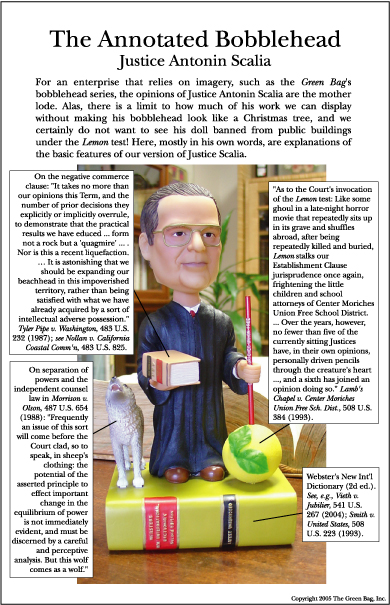The lecture notes are here. The live chat is here.
The Executive Power II – Removal Power
- The Executive Power – Article II (296-297).
- Notes (306-308).
- The “Removal” Power (348-351).
- Myers v. United States (351-366).
- Humphrey’s Executor v. United States (366-370).
- Morrison v. Olson – Removal (370-382).
The majority opinion Myers v. United States was authored by Chief Justice William Howard Taft, who had previously served as President of the United States (the only person to serve in both offices). Taft is in the first row in the middle. One dissent was authored by Justice Brandeis (first row, first on the right), who was the first Jewish Justice appointed to the bench. The other dissent was penned by Justice Oliver Wendell Holmes (first row, second from left). The other dissent was by Justice James McReynolds (first row, first from the left).
This is Justice Taft, who had the second-nicest mustache on the Court.
This is Justice Oliver Wendell Holmes, who had the nicest mustache on the Court.
This is Justice Louis Brandeis.
Justice Joseph Story, who served on the Supreme Court from 1811-1845, published in 1833 his commentaries on the Constitution, that offered explanations for many constitutional questions.
This is Justice George Sutherland, one of the “Four Horsemen” who opposed President Roosevelt’s agenda, who authored Humphrey’s Executor v. United States.
This is William E.Humphrey, who served as the commissioner of the FTC, and who was removed by President Roosevelt.
This is Alexia Morrison, the independent counsel in Morrison v. Olson.
This is Ted Olson, who served in the Reagan Justice Department, and was subject to investigation by Morrison.
Chief Justice Rehnquist wrote the majority opinion for the Court.
This is the Justice Scalia bobblehead. Note the wolf, because of his famous line that “this wolf comes as a wolf.”
